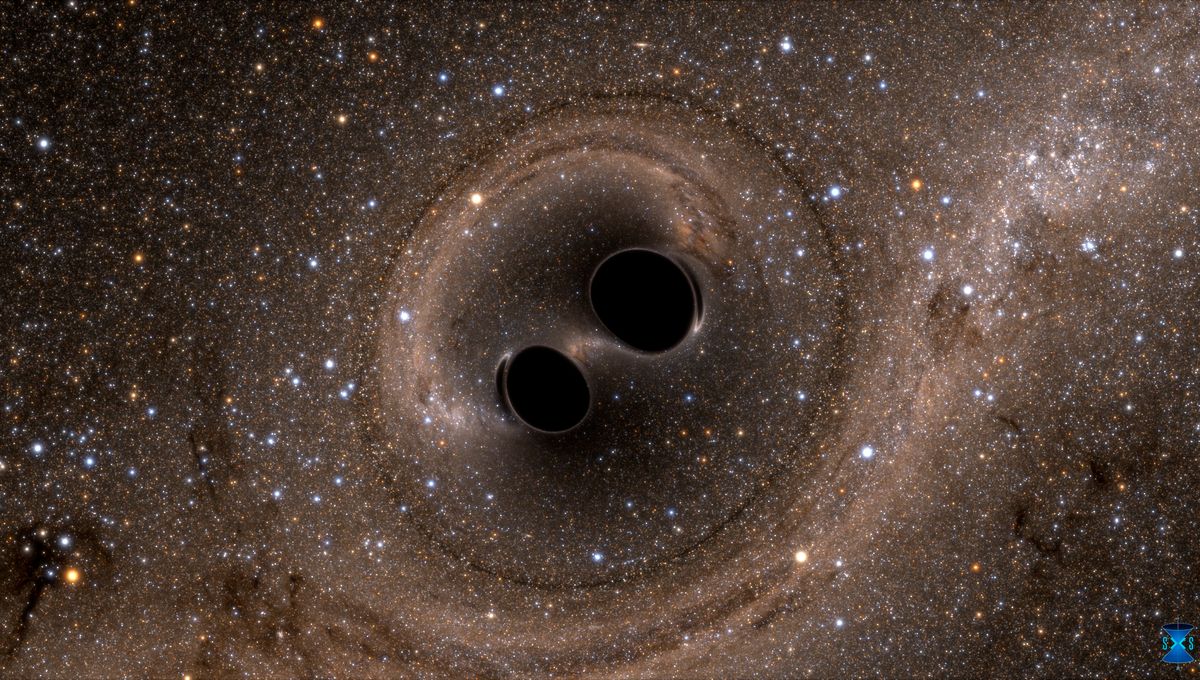
Imagine you have just observed something that is going to revolutionize science. The first thing you’d do is probably check everything multiple times – is this correct? Is it really happening? And if you were in a big international collaboration, you might even want to ask around to check if this is a prank or a test. Or maybe, you might consider something more sinister: someone has created a fake.
This is not a hypothetical, but what actually happened during the weeks following the momentous first observation of gravitational waves. Let’s go back to September 14, 2015. On that day, the two LIGOs (Laser Interferometer Gravitational-Wave Observatory), one in Hanford, Washington, and the other in Livingston, Louisiana, detected for the first time vibrations in space-time.
A LIGO is made of two arms 4 kilometers (2.5 miles) long. A laser is split and shot through the arms. It bounces off mirrors at the end of each arm and comes back to its origin. If the length is indeed the same, as it comes back the laser beam is designed to cancel out. But if space-time is disturbed by waves, you’ll see something. And that is what happened. A signal was seen across both instruments.
“Like many others, I simply didn’t believe it. The reason is that many of us thought it was a test: an ‘injection.’ We used to do many tests where we inject fake signals into the data of our detector,” Professor Pia Astone, from La Sapienza University, told IFLScience during our interview for CURIOUS Live. “And then in the end, we had a meeting and the spokesperson of the collaboration said, no, this is not a test.”
The data suggested a collision between black holes of similar masses, one weighing 36 times the mass of the Sun and the other 29. And the signal looked very good. This was one for the history books, but as the excitement increased so did the concern. Could the signal have been faked?
“The second step was even more complicated. We thought: ‘Okay, but is it possible that someone cheated? In the sense that they introduced the signals having in mind to do something bad,” Professor Astone explained. “And so we got together a group of people. They were charged to really try to see whether it was possible to enter the labs and inject a signal without leaving any clue. After one week, they gave us a report and the conclusion was: ‘Okay guys it is very difficult, but not impossible.’”
But extraordinary claims require extraordinary evidence, and the fact that we had truly detected a collision between black holes had all the proof needed. The remote possibility of sabotage was merely a “not impossible”. The focus shifted from a “What if?” to an “Oh wow!”
“I started to realize this is something fantastic and I am in it. I remember that the period from October 2015 up to February 2016 – when we gave the press conference – was probably the most intense, difficult, but also full of emotions of my entire working activities,” Professor Astone told IFLScience. “We knew that we were writing a paper that would make history!”
And make history they did. Gravitational waves have been observed time and time again following that first detection and a new era of astronomy began that day – with a little dash of drama behind the scenes.
Source Link: The Bizarre Behind-The-Scenes Story Of The First-Ever Detection Of Gravitational Waves